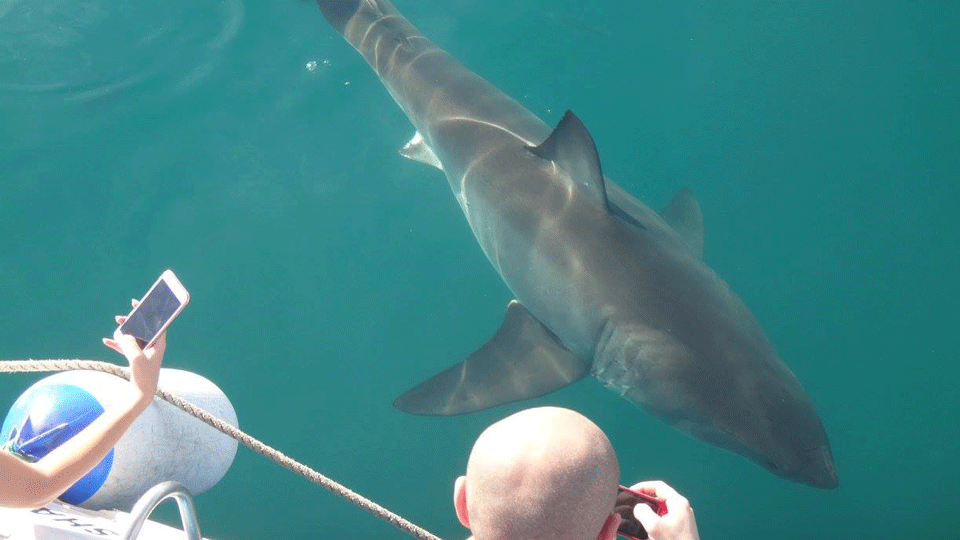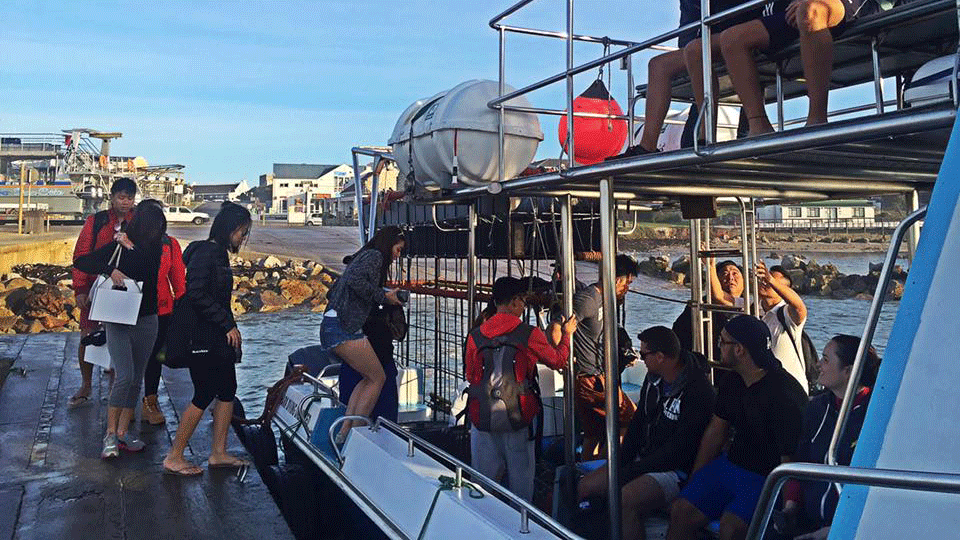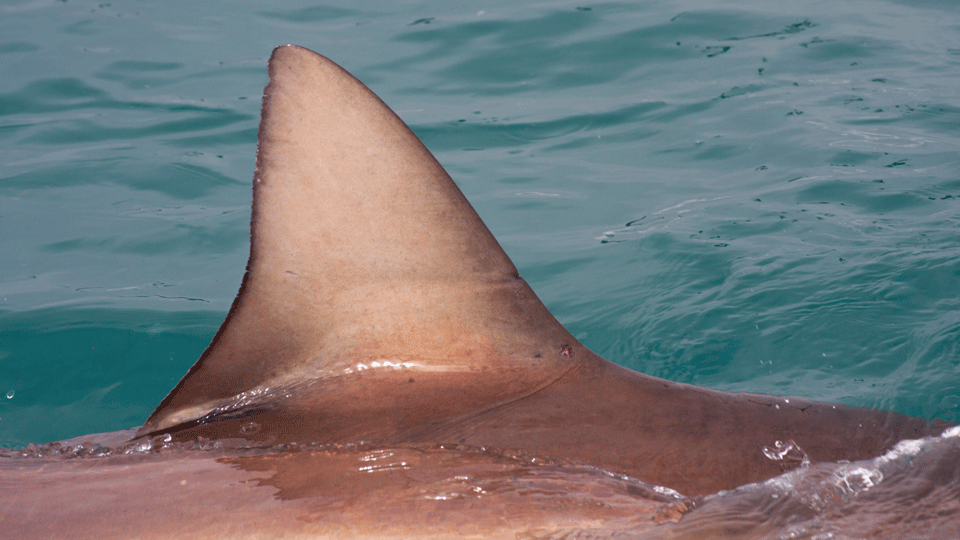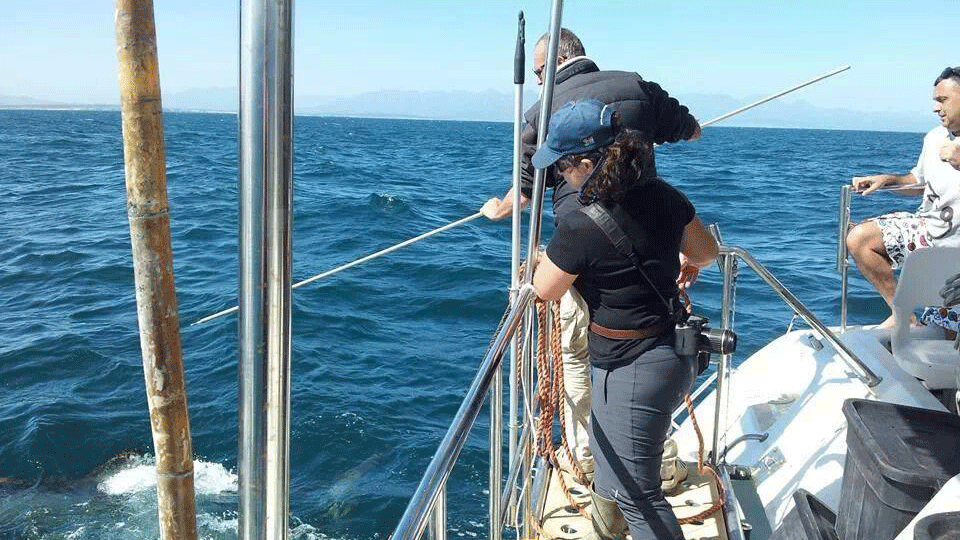Dr Sara Andreotti’s fascinating deep dives into shark research and ocean conservation – her regular SharkNotes – have given us at Italtile, and you, our concerned Italstylistas, a window on a rarely seen and mostly misunderstood underwater world. These glimpses help give us a better understanding of the crucial part sharks play as ‘shepherds of the sea’, keeping the delicate ecosystem in balance.
Sara’s back, this month, with a blogpost that shines a light on one of the most
important questions she’s ever been asked: “Where are all the sharks?”.
#7 FEBRUARY 2023 – WHERE ARE ALL THE SHARKS?
I have been working with white sharks since 2007 (15 years now!) and I’ve become accustomed to the “normal questions” from people interested in finding out more about the subject. The most common questions have always been “aren’t you afraid?”; “do you think that the megalodon is still alive?”; “what do you think about shark cage diving?” and “what is the biggest shark you have ever seen?”.
In the last year or so, one question reached the top of the list: “where did the sharks go?”.
I am writing this blog from one of the first places I came to stay, when I moved permanently to South Africa in 2009. It’s a delightful granny flat in De Kelders, near Gansbaai, facing a small bay hugging the Walker Bay Nature reserve, with the Hermanus peninsula straight across my viewpoint.
I remember the first time I looked across at this magic place, with the kelp forest bobbing between the waves and the southern right whales donating their highest jumps to the lucky viewers, every day, preceding the westerly storms. All I could think about in those days was how incredible it would have been to live here. It was a dream come through. Because here, I had ringside seats to the richness of the local marine life, which supports one of the most charismatic marine predators everyone recognises at first sight: the great white shark.
White sharks were so common in Gansbaai at that time that this place was also called the white shark capital of the world! It was the only coastal town in South Africa supporting not one or two, but eight shark cage diving companies. Gansbaai had it all. White sharks were aggregating near the seal colony of Geyser Rock in winter. (This is when the young sea lions learn to hunt on their own, and then move inshore in summer, targeting other preys such as sting rays, bony fishes and other sharks.)

Those sharks were not bay residents, but they came to visit so often that we could record an average of 15 different individuals on any given day. The best day to be out collecting research data was when the wind blew from the east: a couple of days of easterly wind was enough to calm the sea down, bring a nice clear sky and also allowed us to anchor the boat with the “working side” facing west. This might all seem irrelevant to a “land reader” ... but collecting photos facing west meant the best light from behind us shining over the sharks’ dorsal fins for the entire morning.

We would chum the water with a mixture of tuna and sea water until the first couple of sharks would show up. Playing with them with a tuna head attached to a rope, so that they could stay around the boat and stick the dorsal fin out of the water became an art mastered by few bait handlers. The shark needs to relax, stay interested enough to keep around the boat, but without stealing the fish.
I remember the person responsible for briefing the tourists saying every day: “This is not an aquarium and it is not TV. It is nature, so we can’t guarantee that we will see white sharks today”. Of course, we all knew that we were going to have sharks. In fact in 2010 we had white sharks every day we were out, and so we brought back people with the biggest smiles on their face.

When white sharks were around our boat, no other species of sharks showed up. Every other smaller shark species in the bay would stay very clear from the situation, and in the years I was working in Gansbaai, I cannot recall seeing a single bronze whaler shark.
We sporadically saw orcas in the distance. Once there was a large pod passing by while we were busy with the data collection. The sharks didn’t leave, and didn’t change their behaviour. We collected 17 genetic samples from different individuals on the same day.
After counting all the white sharks visiting the area, by identifying them one-by-one using the uniqueness of their dorsal fins, we started worrying about their numbers.
Throughout this study, shark numbers were already less than we thought. They kept on declining steadily every year. Less and less and less, until a worrying change in the local ecology of the bay revealed itself before our very eyes.
By 2018 the number of white sharks was so low that the next biggest species of sharks replaced their habitat. In False Bay they started recording sevengill cow sharks next to seal island all year round, instead of just during the summer season.
And In Gansbaai, bronze whaler sharks started swimming around the cage diving vessels. These large sharks can grow to almost 2.5 meters in length and they are defined by the bronze coloration of their back; they move in groups. The spectacle for shark enthusiasts watching them underwater through the bars of the cage is breath-taking. When chasing the bait at the end of the rope, they definitely don’t have the same elegance as the bigger white sharks, and often end up on top of each other; but their velocity is compensated by a great control of their movements when speeding up. Just like all sharks, they can count on seven senses to navigate and they seem to put all of them to good use!
At the end of last year Italtile awarded their top-selling sales consultant the chance to join a cage diving expedition. The winner of this once-in-a-lifetime experience worked very hard during the year to sell products that contributed to the conservation of these species. I want to believe that the sharks came around to show off in good numbers that day, to personally thank them for the effort and help!

To be honest, I still don’t have a definite answer to the question “Where did the sharks go?”. But I do know that we humans can take a great deal of the blame.
There are a number of things we can do to give these graceful beauties a better chance to survive. Reducing overfishing, removing shark nets and reducing bycatch are just few of the human-related solutions we should work on. Oh, and stopping the ongoing shark cull around the world would be a good start.
With the year just started, we’d all like to thank Italtile and their partners ITD and Tivoli Taps for their ongoing support and funding of our mission with their SharkWise project. A better future for our ocean means a better future for every living thing on the planet. One drop at the time, we are making waves of change.
(You can view more about Italtile’s SharkWise Project in partnership with ITD and Tivoli Taps here: https://youtu.be/-OrQKd5ouLE )
We all owe a huge debt of gratitude to Sara and her invincible team of researchers from Stellenbosch University, for their tireless research, as well as the refinement of their biomimetic invention, the SharkSafe Barrier, designed to create cruelty-free harmony in the relationship between man and shark.










































Validate your login